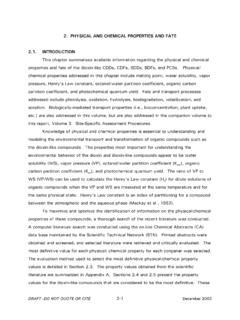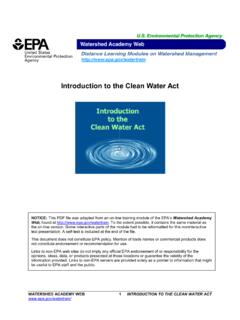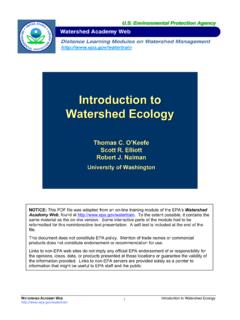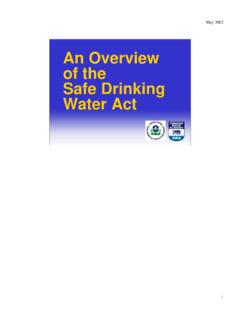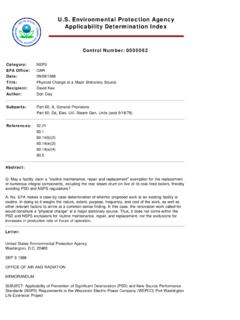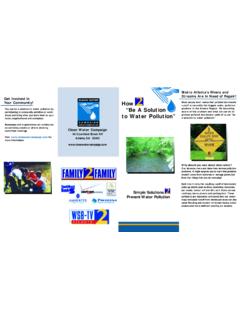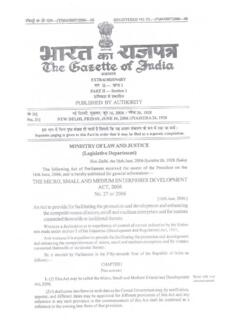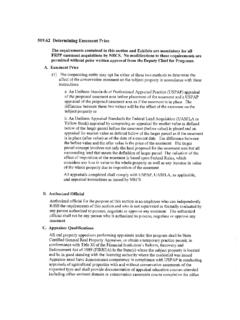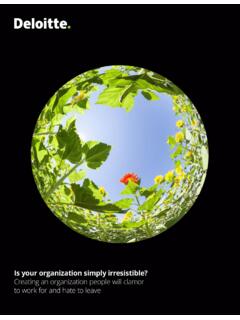Transcription of Source Water Protection - United States Environmental ...
1 August 2002. Source Water Protection Best Management Practices and Other Measures for Protecting Drinking Water Supplies 1-1. August 2002. Acknowledgements The U. S. Environmental Protection Agency would like to acknowledge the contributions of the members of the Source Water Protection Best Management Practices Advisory Group, under the leadership of Steven Ainsworth of the office of Ground Water and Drinking Water . Rita Bair Robert Goo Beatriz Oliveira James Bourne Richard Gullick Bruce Olsen Ross Brennan Denise Hawkins Roberta Parry Hamilton Brown Joyce Hudson Kenneth Pelletier Richard Cobb Elizabeth Hunt Art Persons James Crawford Paul Jehn Shari Ring Anthony Dulka Joseph Lee Andrea Ryon Jack Falk Marty Link Chi Ho Sham MaryJo Feuerbach Ryan McReynolds Paul Shriner Nancy Fitz Karen Metchis Stephanie Vap-Morrow Claire Gesalman Douglas Minter Hal White Pamla Wood The U.
2 S. Environmental Protection Agency would like to acknowle dge the contributions of the members of the Source Water Protection Best Management Practices Advisory Group, under the leadership of Steven Ainsworth of the office of Ground Water and Drinking Water . The members are Rita Bair, EPA, Region 5; James Bourne, EPA, office of Ground Water and Drinking Water ; Ross Brennan, EPA, office of Wastewater Management; Hamilton Brown, State Services Organization; Richard Cobb, Illinois Environmental Protection Agency; James Crawford, Mississippi Department of Environmental Quality; Anthony Dulka, Illinois Environmental Protection Agency; Jay Evans, EPA, office of Underground Storage Tanks; Jack Falk, EPA, office of Wastewater Management; MaryJo Feuerbach, EPA, Region 1; Nancy Fitz, EPA, office of Pesticide Programs.
3 Claire Gesalman, EPA, office of Pesticide Programs;. Robert Goo, EPA, office of Wetlands, Oceans, and Watersheds; Richard Gullick, American Water Works Company, Inc.; Denise Hawkins, The Cadmus Group, Inc.; Joyce Hudson, EPA, office of Wastewater Management; Elizabeth Hunt, Vermont Department of Environmental Conservation; Paul Jehn, Ground Water Protection Council;. Joseph Lee, Pennsylvania Department of Environmental Protection ; Marty Link, Nebraska Department of Environmental Quality; Ryan McReynolds, EPA, office of Ground Water and Drinking Water ; Karen Metchis, EPA, office of Wastewater Management.
4 Douglas Minter, EPA, Region 8; Beatriz Oliveira, EPA, office of Emergency and Remedial Response; Bruce Olsen, Minnesota Department of Health; Roberta Parry, EPA, office of Policy; Kenneth Pelletier, Massachusetts Department of Environmental Protection ; Art Persons, Minnesota Department of Health; Shari Ring, The Cadmus Group, Inc.; Andrea Ryon, Metropolitan Washington Council of Governments; Chi Ho Sham, The Cadmus Group, Inc.; Paul Shriner, EPA, office of Ground Water and Drinking Water ;. Stephanie Vap-Morrow, Nebraska Department of Environmental Quality; Hal White EPA, office of Underground Storage Tanks; and Pamla Wood, Kentucky Department for Environmental Protection .
5 1-2. August 2002. Drinking Water Academy The mission of the Drinking Water Academy (DWA) is to enhance the capabilities of State, Tribal and EPA staff to implement Safe Drinking Water Act (SDWA) requirements. Through classroom instruction, Web-based training, and the availability of training modules and other information, the DWA works to bring new personnel up to speed and enhance the skills of current drinking Water staff. The DWA provides training in SDWA's three major program areas: o Public Water system supervision;. o Underground injection control; and o Source Water Protection .
6 The DWA provides an introductory course in each of these three areas, as well as an introductory overview of SDWA. It also provides regulatory training and technical training on specific topics such as sanitary surveys. This course builds on the introductory Source Water Protection course . The purpose of this course is to provide information on Source Water contamination prevention measures to technical assistance providers who, in turn, will assist local level Water suppliers and communities who are responsible for implementing such measures. 1-3. August 2002. Objectives Define Source Water and explain its importance Describe potential threats to Source Water Discuss SDWA's major Source Water Protection programs Define Source Water Protection measures This training will cover a number of topics.
7 By the end of the session, you should be able to: o Define Source Water and explain its importance;. o Describe potential threats to Source Water ;. o Discuss SDWA's major Source Water Protection programs; and o Define Source Water Protection measures. 1-4. August 2002. Objectives Discuss types of prevention measures Describe measures for specific sources Discuss what individuals and organizations can do to foster Source Water Protection In addition, you should be able to: o Discuss types of prevention measures;. o Describe measures for specific sources; and o Discuss what individuals and organizations can do to foster Source Water Protection .
8 1-5. August 2002. Introduction to Source Water Protection 1-6. August 2002. Definition and Importance of Source Water Protection Source Water Protection is defined as efforts to protect drinking Water sources Surface Water Ground Water Why protect Source Water ? Public health Protection Economic benefits Environmental benefits Public confidence Whether a public Water system relies on surface Water , ground Water , or a combination of the two, Protection of a Water system's Source is important. o If Source Water becomes contaminated, threats to public health are increased.
9 O In addition, expensive treatment or replacement or relocation of the Water supply may be required. Treatment or relocation costs are passed on to every user served by the public Water system and local property values may be reduced. o Water is a limited resource. If a Source becomes contaminated, there may not be another Source available that can be developed. Protection of existing sources of Water is a prudent way to protect public health and keep treatment costs to a minimum. Existing Federal laws have tended to focus on specific sources, pollutants, or land uses that may affect Water quality, and have not addressed the need for an integrated, multi-disciplinary approach to Environmental management.
10 Historically, successes in controlling Water pollution have been most widespread in surface Water through control of point sources and in ground Water by preventing contamination from hazardous waste sites. 1-7. August 2002. Benefits of Source Water Protection "An Ounce of Prevention Is Worth a Pound of Cure.". Many communities are implementing Protection efforts to prevent contamination of their drinking Water supplies. These communities, counties, and locally financed Water districts have found that the less polluted Water is before it reaches the treatment plant, the less extensive and expensive the efforts needed to safeguard the public's health.

